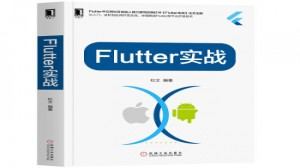Flutter实战 插件开发:IOS端API实现
本节我们接着之前"获取电池电量"插件的示例,来完成 iOS 端 API 的实现。以下步骤使用 Objective-C,如果您更喜欢 Swift,可以直接跳到后面 Swift 部分。
首先打开 Xcode 中 Flutter 应用程序的 iOS 部分:
- 启动 Xcode
- 选择 File > Open…
- 定位到您 Flutter app 目录, 然后选择里面的
iOS文件夹,点击 OK - 确保 Xcode 项目的构建没有错误。
- 选择 Runner > Runner ,打开
AppDelegate.m
接下来,在application didFinishLaunchingWithOptions:方法内部创建一个FlutterMethodChannel,并添加一个处理方法。 确保与在 Flutter 客户端使用的通道名称相同。
#import <Flutter/Flutter.h>
@implementation AppDelegate
- (BOOL)application:(UIApplication*)application didFinishLaunchingWithOptions:(NSDictionary*)launchOptions {
FlutterViewController* controller = (FlutterViewController*)self.window.rootViewController;
FlutterMethodChannel* batteryChannel = [FlutterMethodChannel
methodChannelWithName:@"samples.flutter.io/battery"
binaryMessenger:controller];
[batteryChannel setMethodCallHandler:^(FlutterMethodCall* call, FlutterResult result) {
// TODO
}];
return [super application:application didFinishLaunchingWithOptions:launchOptions];
}接下来,我们添加 Objective-C 代码,使用 iOS 电池 API 来获取电池电量,这和原生是相同的。
在AppDelegate类中添加以下新的方法:
- (int)getBatteryLevel {
UIDevice* device = UIDevice.currentDevice;
device.batteryMonitoringEnabled = YES;
if (device.batteryState == UIDeviceBatteryStateUnknown) {
return -1;
} else {
return (int)(device.batteryLevel * 100);
}
}
最后,我们完成之前添加的setMethodCallHandler方法。我们需要处理的平台方法名为getBatteryLevel,所以我们在 call 参数中需要先判断是否为getBatteryLevel。 这个平台方法的实现只需调用我们在前一步中编写的 iOS 代码,并使用 result 参数返回成功或错误的响应。如果调用了未定义的 API,我们也会通知返回:
[batteryChannel setMethodCallHandler:^(FlutterMethodCall* call, FlutterResult result) {
if ([@"getBatteryLevel" isEqualToString:call.method]) {
int batteryLevel = [self getBatteryLevel];
if (batteryLevel == -1) {
result([FlutterError errorWithCode:@"UNAVAILABLE"
message:@"电池信息不可用"
details:nil]);
} else {
result(@(batteryLevel));
}
} else {
result(FlutterMethodNotImplemented);
}
}];现在可以在 iOS 上运行该应用程序了,如果使用的是 iOS 模拟器,请注意,它不支持电池 API,因此应用程序将显示“电池信息不可用”。
#使用Swift实现iOS API
以下步骤与上面使用 Objective-C 相似,首先打开 Xcode 中 Flutter 应用程序的 iOS 部分:
- 启动 Xcode
- 选择 File > Open…
- 定位到您 Flutter app 目录, 然后选择里面的
ios文件夹,点击 OK - 确保Xcode项目的构建没有错误。
- 选择 Runner > Runner ,然后打开
AppDelegate.swift
接下来,覆盖 application 方法并创建一个FlutterMethodChannel绑定通道名称samples.flutter.io/battery:
@UIApplicationMain
@objc class AppDelegate: FlutterAppDelegate {
override func application(
_ application: UIApplication,
didFinishLaunchingWithOptions launchOptions: [UIApplicationLaunchOptionsKey: Any]?) -> Bool {
GeneratedPluginRegistrant.register(with: self);
let controller : FlutterViewController = window?.rootViewController as! FlutterViewController;
let batteryChannel = FlutterMethodChannel.init(name: "samples.flutter.io/battery",
binaryMessenger: controller);
batteryChannel.setMethodCallHandler({
(call: FlutterMethodCall, result: FlutterResult) -> Void in
// Handle battery messages.
});
return super.application(application, didFinishLaunchingWithOptions: launchOptions);
}
}接下来,我们添加 Swift 代码,使用 iOS 电池 API 来获取电池电量,这和原生开发是相同的。
将以下新方法添加到AppDelegate.swift底部:
private func receiveBatteryLevel(result: FlutterResult) {
let device = UIDevice.current;
device.isBatteryMonitoringEnabled = true;
if (device.batteryState == UIDeviceBatteryState.unknown) {
result(FlutterError.init(code: "UNAVAILABLE",
message: "电池信息不可用",
details: nil));
} else {
result(Int(device.batteryLevel * 100));
}
}
最后,我们完成之前添加的setMethodCallHandler方法。我们需要处理的平台方法名为getBatteryLevel,所以我们在 call 参数中需要先判断是否为getBatteryLevel。 这个平台方法的实现只需调用我们在前一步中编写的 iOS 代码,并使用 result 参数返回成功或错误的响应。如果调用了未定义的 API,我们也会通知返回:
batteryChannel.setMethodCallHandler({
(call: FlutterMethodCall, result: FlutterResult) -> Void in
if ("getBatteryLevel" == call.method) {
receiveBatteryLevel(result: result);
} else {
result(FlutterMethodNotImplemented);
}
});现在可以在 iOS 上运行应用程序,如果使用的是 iOS 模拟器,请注意,它不支持电池 API,因此应用程序将显示“电池信息不可用”。

